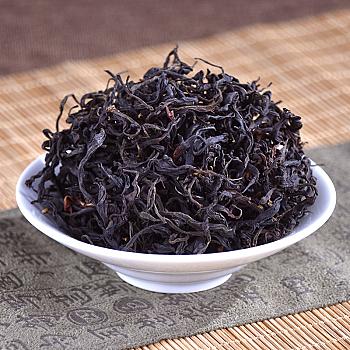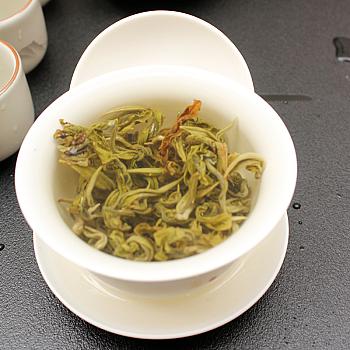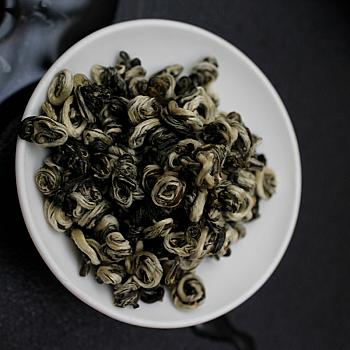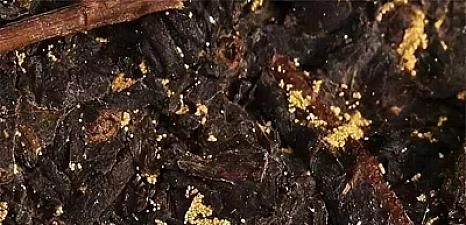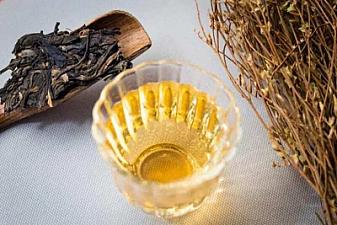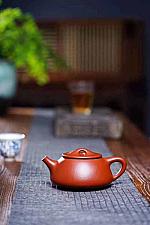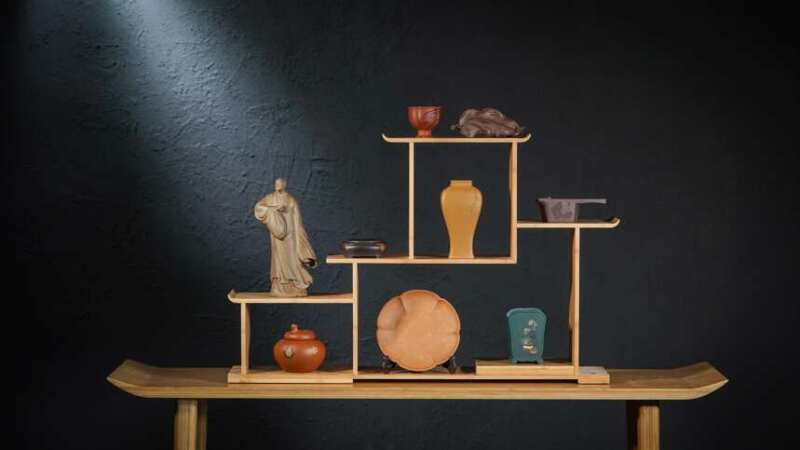
Nine craftsmen from Yixing work together to create these beautiful zisha teapots, and they are really fun to look at.
August 19, 2025
From ancient times to the present, Yixing zisha has stood out as an art form in a hundred shapes and ten thousand styles, displaying various colors and never fading. The use of zisha is embodied in its unique tea-drinking function imparted by the material; while the elegance of zisha comes from the ceramic aesthetic that defies all conventions. Elegance is a mode of expression seeking beauty both inwardly and outwardly. Only with respect for one's inner self can there be reverence for objects, leading to the emergence of teahouses and study rooms.
From ancient times to the present, Yixing purple sand teapots stand out with its diverse and varied artistic forms; it's a kaleidoscope of colors, and is not subject to decline. The use of purple sand is reflected in its unique material characteristics, such as its functional properties for brewing tea; while the elegance of purple sand comes from its unorthodox ceramic aesthetic.
Yá, is a form of inner pursuit of beauty. Only with respect for the heart, can there be an admiration for objects; only with it, can there be tea houses and study rooms. Through forms such as qin, chess, calligraphy, painting, flowers and moonlight, poems and tea, meditation and spiritual practice, Chinese scholars demonstrate the excellence of China's traditional culture, the unique aesthetic beauty of purple clay is not limited to the art of tea-making but also shapes the literary spirit of Chinese scholars.
Jia, though taking on a beautiful appearance, yet rooted in its essence. Essence means that the quality of being reflected from the master's insight, wisdom, and character.

The cultural relic spirit is passed on through modernization. Cultural renaissance requires traditional elegance to evolve towards youthfulness and perfect fusion with modern life. Based on this, the nine jades have jointly designed nine items titled "Nine Elegant" pieces including tea pot, tea tray, teapot, public cup, tea cup, lid, figurine, vase and incense holder.
Nine Art, condenses the essence of antique objects, collects and presents the magnificent scenery. Aims to promote intangible cultural heritage and popularize purple sand art. Arrange nine art, transcending ancient and modern, directly expressing one's thoughts, presenting a serene and harmonious lifestyle, showing reverence for excellent traditional culture and expectation for aesthetics.
To cultivate oneself in refinement and virtue, one becomes a good person; to cultivate one's heart, one follows the right path, and is able to bear the Way (Dao). Also, one can gather friends.

Buddha Statue Name Bhiksu Fang
Xiaoming Shi designed

This is a sculpture of Lu Yu, standing with a vase, designed in the heart, carefully carved by skillful hands, a natural and elegant posture, firm and deep eyes, free and relaxed wide sleeves, holding a pot of tea with dignity, eyebrows and beard are vividly depicted, fully showing the solemnity and sacredness of Tea Saint. A proud statue of a tea god who is devoted to tea art, wise and clever, it's a perfect work of art that feels like it was born naturally, full of unique skills and artistic charm.

Fair Cup Name Bone—
Fan Jianjun (designer)

Inspiration comes from the Taohuashan stone, with an oblique triangular mouth, right-angled forcefulness, clear angles, and a body of carved Taohuashan stones. From ancient times, gardens without rocks are not elegant, rooms without rocks are not refined. A single rough rock can become several platforms for offerings, piling up stones to create mountains and building cities' gardens. Scholars love rocks, appreciate rocks, play with rocks, and enjoy rocks, treating them as friends or even symbols of themselves, full of courage, seeking inspiration from the wisdom of life.

Teapot Name Najia—
Fan Weiqun designed

Tea container, with objects used to brew tea placed in it, is designed like a fan and decorated with mud painting of auspicious motifs. The base of the foot is molded into the shape of a scroll. Used for offering incense and flowers in elegant rooms, this practice originated from the Tang Dynasty court and was widely practiced during the Ming and Qing dynasties. People placed it on the table or hung it on the wall to appreciate its beauty. After the Yuan and Ming periods, people used fresh fruits and flowers as a decorative element of auspicious motifs, which were painted into the tea container to wish for good luck in the coming year and reflect the owner's refined taste. The name of this container is a metaphor for welcoming the spring season with good fortune and prosperity.

Master's Cup Nanle Tian
Jiang Yanbin Design

The inspiration comes from the Flying Apsaras in Dunhuang, and the shape of the cup is like a gold and silver cup from the Tang Dynasty. The lotus petal balance is even. The cup body is decorated with flying apsaras, depicting a sense of Xian music and strange scenery, as if the soft wind of the Pure Land was blowing over, shocking the intoxicating beauty of thousands of years.

Tea Tray Name: Feng Qin
Fan Zhenfeng Design

The six-petaled design was inspired by ancient bronze mirrors. The decoration on the disc is a frost pattern, which is commonly used in ancient window grilles, showing an unpredictable and intricate rule that is both abundant and harmonious. It conveys a natural message to people, evoking a feeling of pleasure as if they were in nature.

Teapot Elegant Shadow---
Gou Meiqun design

The inspiration for the design comes from ancient ceramic vases, and the shape is simplified, poetic and beautiful. The painting style of Tangsancai, symmetrical and harmonious patterns, with colorful and delicate colors that are even more vibrant. The grandeur of the Great Tang Dynasty left a lasting impression on today's most dazzling brilliance, known as Tangsancai. Different colors blend together to produce infinite patterns, rare and captivating beauty.

Gai Zhi (K'ai Chih)
Maozi Jian She

The inspiration comes from the design of chairs and desks, which are sturdy, upright and elegant. The patterns are rich in color and variety, smooth lines that contrast with gentle elegance. Like a chair or desk, it has tension and rhythm, unique shape, refined and dignified style. This piece fully inherits the aesthetic "meticulous to detail, expansive" of ancient furniture design, its shape is relaxed and dignified, accompanied by exquisite ornaments, giving people a sense of comfort.

Incense Sticks Nameless Cloud
Jiang Yongjun designed

With the leaves, it's like "one flower, one world; one leaf, one Bodhi." In ancient times, people considered burning incense a cultured thing. Even when it's just a tiny thread of fragrance carried by the wind, it can show off one's refinement. Whether it's after tea or during meals, boiling water to brew tea at night when people are quiet and sitting under a lamp, even lying in bed reading with a pillow behind them when they're lost in thought, that tranquil, warm fragrance always brings a sense of harmony between the mind and spirit, concentrating one's thoughts. Savoring the scent of one leaf, one Bodhi, it evokes endless Chan (Zen) intentions.

Vase Name Tamp
Yu Xiaofang designed

Jo Yu Xiao Fang is skilled in bamboo crafts. The bottle body is mixed with materials, and the shoulder begins to decorate with a pattern of bamboo branches, which naturally hangs on the bottle body. Bamboo leaves are elegant and playful, presenting a quiet beauty. The overall atmosphere is ancient and simple, stable and serene, and full of Zen intentions. As an arrangement in the aesthetics of life, it often pursues a natural and free style. This bottle follows the aesthetic truth, though made by humans, it is like heaven's creation.
